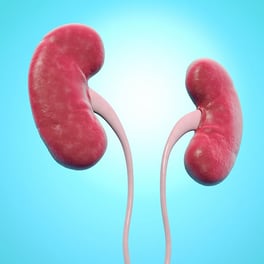
Teledyne CETAC and Arkansas State University completed a study to determine the concentration and normalized profiles of elements in the organs of a beach harbor porpoise (Phocaena phocaena). The carcass was stranded off the coast of Cape Cod, Ma, in 2003. Multiple elements (including Hg, Se, Cd, Zn, Cu, and Na) were detected and measured in liver and kidney samples. A thermoelectrically cooled sub-zero laser ablation sample cell (Hyphenated Solutions, Jonesboro, AR) was created for the analysis of porpoise liver and kidney tissues. The temperature-controlled cooling cell has a user programmable operational range between 0 and -30 degrees Celsius. The cooling cell was used to preserve the integrity of the sample during ablation and to evaluate the affect of sub-zero temperatures on reproducibility.
Normalized metal ion profiles in samples were determined using LA-ICP-MS, a powerful analytical tool for elucidation of trace elemental concentrations in solid samples. Frozen tissue samples were ablated using a CETAC LSX-213 Laser Ablation System, operating at 213 nm. A Helium carrier stream carried ablated samples into the argon plasma of a PerkinElmer Elan 9000 ICP-MS system. During laser ablation, tissues were maintained at 0 degrees Celsius or cooled to subzero temperatures (-10 to -20 degree Celsius) in the laser ablation cold cell to monitor the effect of sample temperature on ablation efficiency and reproducibility. Maintaining the samples at subzero temperatures within the Laser Ablation Cryocell improves the stability of ion currents and the precision and accuracy of analytical measurements.
Results from laser ablation analyses were compared with ICP-MS analyses of tissue samples digested with ultrapure nitric acid. Metals in the digested samples were measured and detected following routine ICP-MS tuning and optimization procedures built into the ELAN software. Of the metals analyzed, elevated levels of Hg (~120 and 20 ppm), Se (~132 and 56 ppm), and Cd (~7 and 65 ppm) were found in the liver and kidney respectively.
Raw elemental ratios acquired by laser ablation ICP-MS analysis were - depending on the metal - similar to liquid digestion based ICP-MS values. While precision in LA-ICP-MS is known to improve for analyses of tissues cooled below sub-zero temperatures compared to those at or above room temperature, only slight differences in precision were identified for the three temperatures used in this study. The best precision was determined to be -10 degrees Celsius for most elements.
For instrumentation and operating parameters, download the Application Note.
For materials and methods, the harbor porpoise was dissected following standard necropsy procedures. Small subsamples of the organs were sectioned and transferred to a -80 degree Celsius freezer. After cooling, the tissues were removed from the freezer, placed in the cell and allowed to equilibrate for five minutes. Experiments were conducted at 0 degrees, -10 degrees and -20 degrees Celsius.
Results
Ratios obtained by LA-ICP-MS were generally much higher than digestion-based ICP-MS. The variance could be affected by many factors such as wet vs. dry plasma, plasma mass load and temperature, homogeneity of the aerosol, surface sampling (LA) vs. complete digestion, and surface and sub-sample differences. High amounts of Zn, Hg, and Se indicate the porpoise may have suffered from infectious disease or possibly methylmercury poisoning (presence of MeHg was determined in separate study). Cryocell successfully used to control and maintain sub-zero temperature for analysis of tissues by LA-ICP-MS.
For more details about the results of this study, download the Application Note.


